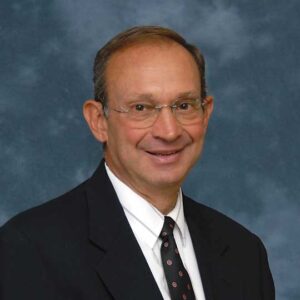WSRCA Hits 50 Year Milestone
The Connection Between the WSRCA & Western Roofing

It was back in 1973 when a group of Western roofing contractors gathered for a beer at the national convention to discuss the unique problems they faced in the West. The consensus was that they needed their own association to address Western roofing concerns. A year later, in 1974, the Western States Roofing Contractors Association (WSRCA) was born.
During those formative years, money was tight for the association. The board members were committed to the cause, and voluntarily started paying their membership dues several years in advance just to keep the WSRCA afloat and provide working capital. The board also realized they had an ongoing problem; very few contractors even knew what the association was, what it stood for, or they hadn’t even heard of it. The WSRCA had a few members, but membership growth was slow, and mainly relied on word-of-mouth to get their message out.
The association clearly had to step up their game. In 1977, Johnny Zamrzla, the second President of the WSRCA, visited his friend Sam Jaffe. Jaffe owned a publishing business, with his main income derived from publishing hardbound copies of local construction codes that he sold nationwide to cities and contractors. Jaffe also published several national construction trade magazines.
Zamrzla proposed to Jaffe that he publish a regional roofing magazine to help promote the WSRCA. The problem was that Jaffe was getting close to retirement and in the process of selling off his trade publications. The last thing he wanted to do was take on another magazine, especially a regional one.
However, Zamrzla was persistent. The association needed a way to reach all roofing contractors in the West, members or not. It would also be a means to promote the WSRCA’s activities, conventions, programs, and membership to the industry. He promised Jaffe that the magazine would be the official publication of the WSRCA, yet would operate financially and editorially independent from the association.
As a favor to Zamrzla, Jaffe relented and Western Roofing published its first issue in February, 1978, carrying articles about built-up roofing, shingles, job stories, and yes, the WSRCA’s upcoming convention in Salt Lake City, Utah. The WSRCA was finally reaching a wider audience and it was starting to pay off.
In 1984, Jaffe said that he would, “continue to publish Western Roofing as a favor, but only as long as the revenue covered the printing and mailing. I’ll guess I’ll just keep sucking up the costs of labor, resources, and overhead.” By this point, Jaffe had tried to get the WSRCA to take over the publication, but they didn’t have the manpower, expertise, and clearly didn’t couldn’t afford to take on a project that was running in the red.
I attended my first WSRCA convention in 1984, for their tenth anniversary in San Diego, California, where I took pictures of the event for this publication. It was my first photo assignment, and I made sure to diligently capture all the product demonstrations, the speakers, the seminars, and the exhibitors’ booths on display at the Harbor Island Hotel. I also realized that Western Roofing had potential.
I struck a deal with Jaffe for the purchase of Western Roofing, but first I had to get the approval of the WSRCA. Following the 1984 convention, I met with the WSRCA board where they grilled me for two days about my experience, intentions, and how I expected to turn a profit. In the end, the board granted their approval.
Over the years Western Roofing has thrived nicely, with both a print and online presence. Western Roofing still wears the official publication of the WSRCA badge proudly, and is still a family-owned business, with my son, Marcus Dodson, taking over the helm as publisher in 2013.
This year, the WSRCA is celebrating 50 years of serving the Western roofing industry. Congratulations! Western Roofing is now 46 years old, and our family has been at the helm of the publication for the last 40 years. We’ve worked hand-on-hand with the WSRCA since the beginning. It’s been a wild ride, and we still have a long way to go.

Marc Dodson
Editor